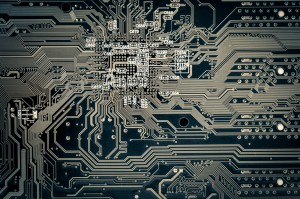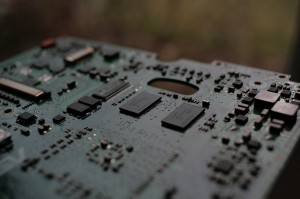Chip solutions for healthcare and medical device applications
The planning required to design chips for medical applications is quite different from other areas, and even very different from mission-critical markets such as self-driving cars. Regardless of the type of medical device, however, medical chip design will face three major challenges: power consumption, safety and reliability.
In the development of semiconductors used in healthcare, developers must first ensure that the low power consumption of medical devices, implantable devices are more stringent requirements for this, because such devices need to be surgically placed in the body and removed, power consumption should be lower, in general, doctors and patients want implantable medical devices can last 10 to 20 years, rather than every few years to replace a battery.
Most non-implantable medical devices also require ultra-low-power designs, because such devices are mostly battery-powered (such as fitness trackers on the wrist). Developers need to consider technologies such as low-leakage processes, voltage domains and switchable power domains to reduce active and standby power consumption.
Reliability is the probability that the chip will perform the required function well in a given environment (inside the human body, on the wrist, etc.) for a specified period of time, which will vary depending on the use of the medical device. Most failures occur at the manufacturing stage or near the end of life, and the exact cause will vary depending on the specifics of the product. For example, the life span of a laptop or mobile device is approximately 3 years.
End-of-life failures are primarily due to transistor aging and electromigration. Aging refers to the gradual degradation of transistor performance over time, eventually leading to the failure of the entire device. Electromigration, or unwanted movement of atoms due to current density, is an important cause of interconnection failure between transistors. The higher the current density through the line, the greater the chance of failure in the short term.
The proper operation of medical devices is critical, so reliability needs to be ensured at the very beginning of the design phase and throughout the process. At the same time, reducing variability in the production phase is also essential. Synopsys offers a complete reliability analysis solution, commonly referred to as PrimeSim Reliability Analysis, which includes electrical rule checking, fault simulation, variability analysis, electromigration analysis, and transistor aging analysis.
The confidential medical data collected by medical devices needs to be secured so that unauthorized personnel cannot access private medical information. Developers need to ensure that medical devices are not susceptible to any form of tampering, such as the possibility of unscrupulous individuals hacking into a pacemaker to harm a patient. Due to the new pneumonia epidemic, the medical field is increasingly using connected devices to reduce the risk of contact with patients and for convenience. The more remote connections that are established, the greater the potential for data breaches and other cyber attacks.
From the perspective of chip design tools, medical device chip developers use no different tools from those used in other application scenarios; EDA, IP cores, and reliability analysis tools are all essential. These tools will help developers plan effectively to achieve ultra-low power chip designs with increased reliability, while taking into account space constraints and safety factors, which are important for patient health, information security and life safety.
In recent years, the new crown outbreak has also made more and more people realize the importance of medical systems and medical devices. During the epidemic, ventilators were used to assist patients with severe lung injury with assisted breathing. Ventilator systems use semiconductor sensors and processors to monitor vital signals. The sensors are used to determine the patient's rate, volume and amount of oxygen per breath and to adjust the oxygen level exactly to the patient's needs. The processor controls the motor speed to assist the patient in breathing.
And the portable ultrasound device can detect viral symptoms such as lung lesions in patients and quickly identify features of acute pneumonia associated with the new coronavirus without waiting for nucleic acid testing. Such devices previously used piezoelectric crystals as ultrasound probes, which typically cost more than $100,000. By replacing the piezoelectric crystal with a semiconductor chip, the device costs only a few thousand dollars and allows for easier detection and assessment of the patient's internal body.
The new coronavirus is on the rise and is not completely over yet. It is important for public places to check the temperature of a large number of people. Current thermal imaging cameras or non-contact forehead infrared thermometers are two common ways to do this, and these devices also rely on semiconductors such as sensors and analog chips to convert data such as temperature into digital readings.
The healthcare industry needs advanced EDA tools to meet today's ever-changing challenges. Advanced EDA tools can provide a variety of solutions, such as implementing real-time data processing capabilities at the hardware and software levels, system integration (integrating as many components as possible into a single-chip platform), and evaluating the impact of low-power designs on heat dissipation and battery life. Semiconductors are an important component of many current medical devices, providing functions such as operational control, data processing and storage, wireless connectivity, and power management. Traditional medical devices are not as dependent on semiconductors, and medical devices that apply semiconductors not only perform the functions of traditional medical devices, but also improve the performance of medical devices and reduce costs.
The medical device industry is evolving at a rapid pace, and chip developers are designing and continuing to drive innovation in the next generation of implantable devices, hospital medical devices and healthcare wearables.








